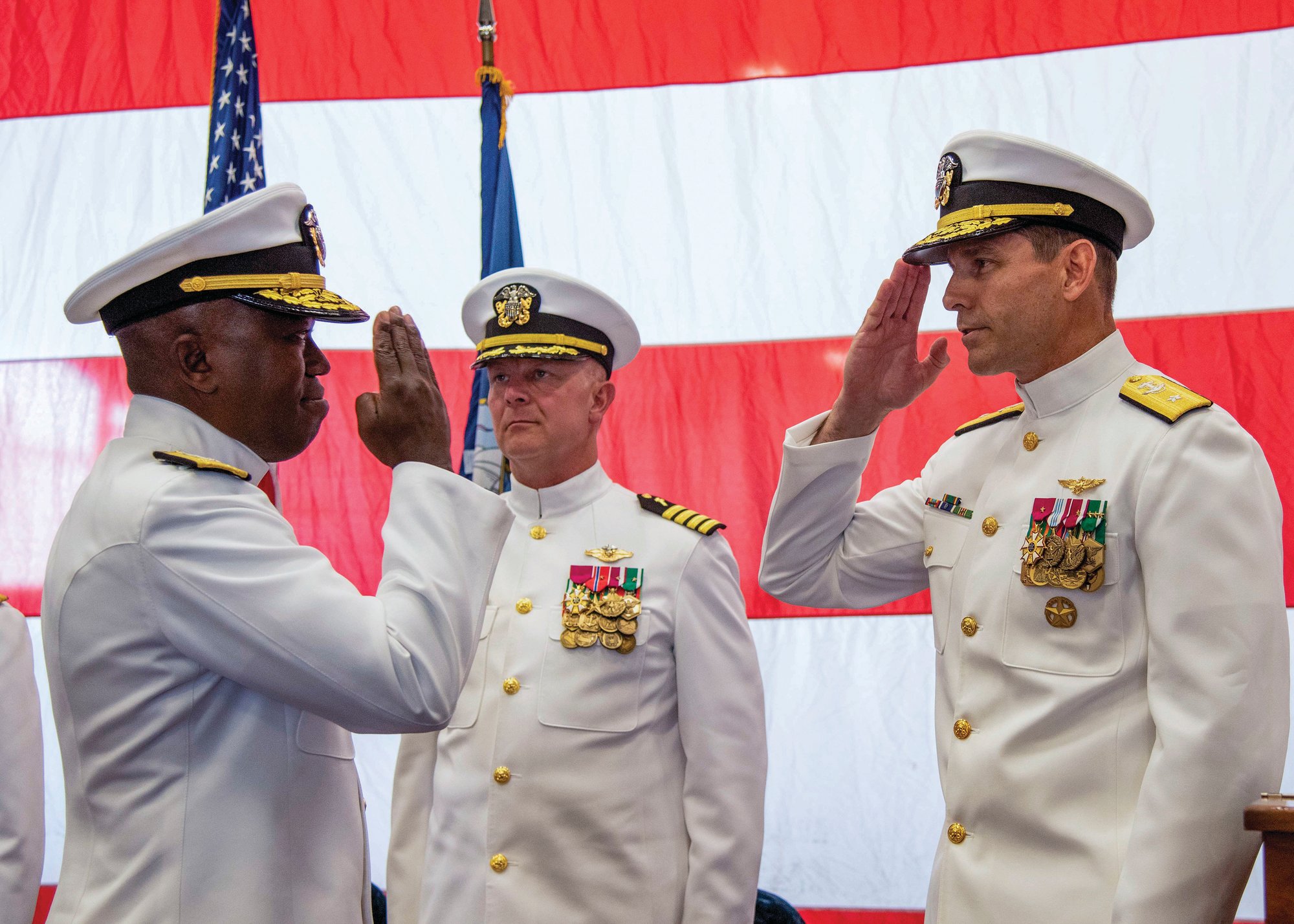Sumter native will become commandant of National War College after ceremony
Navy Office of Community Outreach
SAN DIEGO - Rear Admiral John E. Gumbleton assumed command from Rear Admiral Cedric E. Pringle as commander, Expeditionary Strike Group 3 (ESG 3), during a change-of-command ceremony held aboard amphibious assault ship USS Makin Island (LHD 8) on Sept. 30.
Pringle, a native of Sumter and a 1986 graduate of University of South Carolina, assumed command of ESG 3 in December 2017 and upon his departure will be assigned as the 31st commandant of the National War College.
Lt. Gen. Joseph L. Osterman, I Marine Expeditionary Force commanding general, served as the guest speaker for the event. Vice Admiral Scott D. Conn, commander, U.S. Third Fleet, presented Pringle with a Legion of Merit as an end-of-tour award, recognizing him for his exceptional service to the U.S. Navy.
"Here is a leader who has had incredible foresight with where we need to go as a naval service," Osterman said. "He's truly a selfless professional."
As ESG 3 commander, Pringle prepared amphibious units for operations within U.S. 3rd Fleet and Amphibious Ready Group (ARG)/Marine Expeditionary Unit (MEU) deployments worldwide.
Pringle oversaw the USS America (LHA 6), USS Essex (LHD 2) and USS Boxer (LHD 4) ARG/MEU successful deployments to the U.S. 5th, 6th and 7th Fleet areas of responsibility. Following this, he assisted in the homeport change planning for USS Bonhomme Richard (LHD 6), USS Wasp (LHD 1), USS America (LHA 6) and USS New Orleans (LPD 18).
As Littoral Combat Force 36 deputy commander during Exercise Pacific Blitz 2018, he seamlessly integrated blue and green forces in the first exercise of its kind. Implementing advanced warfighting concepts, he exercised Littoral Operations in a Contested Environment and Expeditionary Advanced Base Operations.
Pringle's initiatives during his tenure in command to improve warfighting readiness changed the way future strike groups will train and operate, which will deliver the most capable ships to geographic combatant commanders.
He reflected on his time as commander, while thanking his peers and the men and women of the ESG 3.
"Our Navy is still the most powerful force on the face of this Earth, and it doesn't matter if we have 280 warships or 355 ships," Pringle said. "We are still that impenetrable force. No one else in the world can do what we can do."
Gumbleton is a native of Falmouth, Massachusetts, and was designated a naval aviator in October 1990.
At sea, Gumbleton served as commanding officer of USS Boxer (LHD 4) and most recently served as the deputy chief of strategy, resources and plans (N5) at U.S. Naval Forces Europe-Africa-U.S. 6th Fleet, based in Naples, Italy.
"To win without fighting means that deterrence and diplomacy can only work under the shadow of a strong Navy and Marine Corps team," Gumbleton said. "Our energies will be focused on the planning and testing of innovative concepts to further the intellectual work brought forward, balanced with setting the bar for credible, combat forces to be ready when the nation calls."
ESG-3 is comprised of four amphibious squadrons, eight naval support elements and 15 amphibious warships comprised of approximately 15,000 active-duty and reserve sailors and Marines. The mission of ESG-3 is to serve as the command element for Marine expeditionary brigade-level expeditionary operations as commander of an amphibious task force.
More Articles to Read

